How to clean my green pool?
May 10,2023 | AQUAFYSH
A swimming pool is a great addition to any backyard or outdoor space, providing hours of entertainment and relaxation. However, maintaining a clear and clean pool requires effort and attention. One common problem that pool owners face is green pool water. In this article, we will explore the reasons why pool water turns green, how to prevent it, and how to treat it.
Green pool is literally a pool has water that appears cloudy and green instead of clear and blue. This is typically due to the growth of algae, which can spread quickly and make the pool water look uninviting and unsanitary.
Having a clean and clear pool is so important. It keeps swimmers safe from harmful bacteria and makes the pool look inviting. A well-maintained pool also adds value to your property and can save you money in the long run by preventing costly repairs.
What causes pool water to turn green?
There are several reasons why pool water goes green:
- A lack of chlorine
A lack of chlorine is a common cause of green pool water. Chlorine is a powerful disinfectant that helps to kill bacteria and other harmful organisms that can grow in pool water. Without enough chlorine, these organisms can quickly multiply and turn the water green. The warmer the water is, the faster this process will be.
- High PH level
When the pH level is too high, it can promote the growth of certain types of algae, such as green algae. Alkaline conditions provide a favorable environment for algae to multiply and thrive in the pool water. High pH can also reduce the effectiveness of sanitizers, such as chlorine, making it more challenging to control algae growth. To prevent pool greening, it is crucial to maintain the pH level within the recommended range of 7.2 to 7.8.
Regular testing of the pool water and adjusting the pH level, if necessary, can help prevent pool greening. If the pH level is too high, pH reducers like muriatic acid or sodium bisulfate can be used to lower it. Conversely, if the pH is too low, pH increasers like sodium carbonate or soda ash can be used to raise it. By keeping the pH within the recommended range, you can minimize the risk of pool greening and ensure a healthier swimming environment.
- Excess pollen & metals in the water
Pollen and metals can both impact the color of your pool water. During certain times of the year, especially spring, pollen from trees, flowers, and plants can be carried by the wind and find its way into your pool. When pollen accumulates on the water surface, it can give the pool a yellowish or greenish tint.
While metals can cause various colors, such as reddish-brown, greenish, or brownish. Proper pool maintenance, including skimming, filtration, and water testing, is crucial in preventing or addressing these issues and ensuring your pool maintains its desired color and clarity.
- Filter not working or running long enough
Without a functioning filter, debris and other particles can build up in the water and make it look murky or dirty. This can be unappealing to swimmers and may make the water less safe for swimming.
How to Clean a Green Pool?
Cleaning a green pool requires a systematic approach to eliminate the algae and restore the water to a clear and clean condition. Here's a step-by-step guide to help you clean a green pool:
- Remove debris:
Use a pool net or skimmer to remove any leaves, branches, or other large debris floating on the water surface. This will help improve water circulation and prevent clogging of the filtration system. Do not vacuum if you cannot see the bottom of the pool. Vacuuming blindly can lead to a clog in your vacuum, filter, or underground pipes, which is a hassle you do not want. But try to remove as much debris as you can.
- Brush the pool surfaces:
If your pool water is only teal green, you can skip this part and treat it chemically. However, this is a much faster way to get your pool clean. Using a pool brush to scrub the walls, floor, and other surfaces of the pool. Focus on areas where algae growth is visible or where it tends to accumulate, such as corners, steps, and around water features. Brushing helps to dislodge algae from the surfaces and makes it easier to remove during the cleaning process.
If your pool is close to black, then it needs to be drained. You may need to give it an acid wash, or call a professional to do it. If you choose to do it yourself, remember to pay special attention to the areas where the water doesn't flow too well. For example: under the pool ladder, on the pool steps, and in all the nooks and crannies at the bottom of the pool.
- Vacuum the pool:
Attach a pool vacuum to your filtration system or use a manual pool vacuum to clean the pool floor and remove the dislodged algae and debris. Follow the manufacturer's instructions for proper vacuuming techniques. Be thorough and cover the entire pool surface.
- Test pH Level and the Alkalinity:
Green pools may be caused in part by high pH levels. In order to lower the pH levels, you first need to test to find out how high they really are. You'll need a pool testing tool for this part.
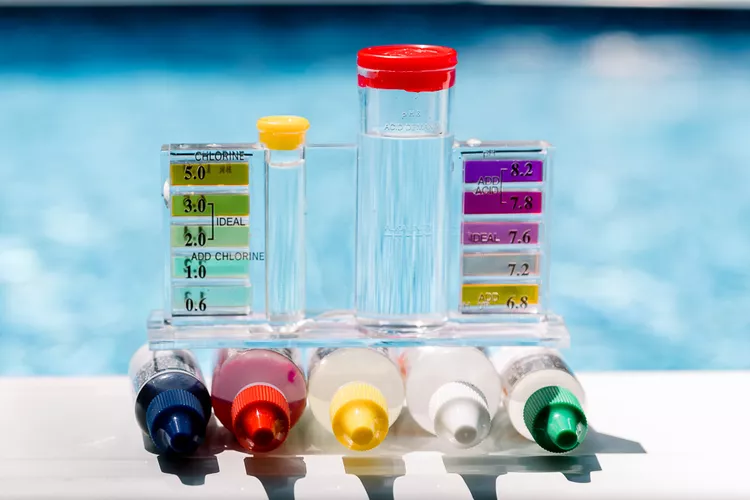 Photo: The Spruce / Ana Cadena
Photo: The Spruce / Ana Cadena
If you don’t have a pool test kit, you can buy one on Amazon. They can show pH level, alkalinity level, chlorine level and more. Please note the standard pH level for pool water is typically recommended to be between 7.2 and 7.8. And the standard alkalinity level should between 100 and 150 ppm (parts per million), it’s okay if it’s a bit on the lower end.
- Shock the pool:
Pool shock is a powdered form of chlorine that is used to treat your green pool water to help make it safe and healthy to swim in. This step helps to kill the remaining algae and microorganisms.
How much shock should be added to pool?
The pool volume equation for a rectangular pool is:
[Pool Length in Feet] x [Pool Width in Feet] x [Pool Depth in Feet] x 7.5 = [Volume of Your Pool in Gallons]
(Shallow end + Deep end) / 2 = Average Depth
Once you have the volume of your pool (in gallons), see how many pounds you need for the shock. You will find a chart on the packaging.
If your pool has an irregular shape, you can consult your pool building company.
How to shock the pool?
1. Protect yourself
First wear gloves and safety glasses while working with pool chemicals.

2. Pre-dissolve the shock
As long as you have shock that doesn’t require pre-dissolving, adding pool shock to your pool is unbelievably easy. All you have to do is walk slowly around the perimeter of your pool and pour it straight in.
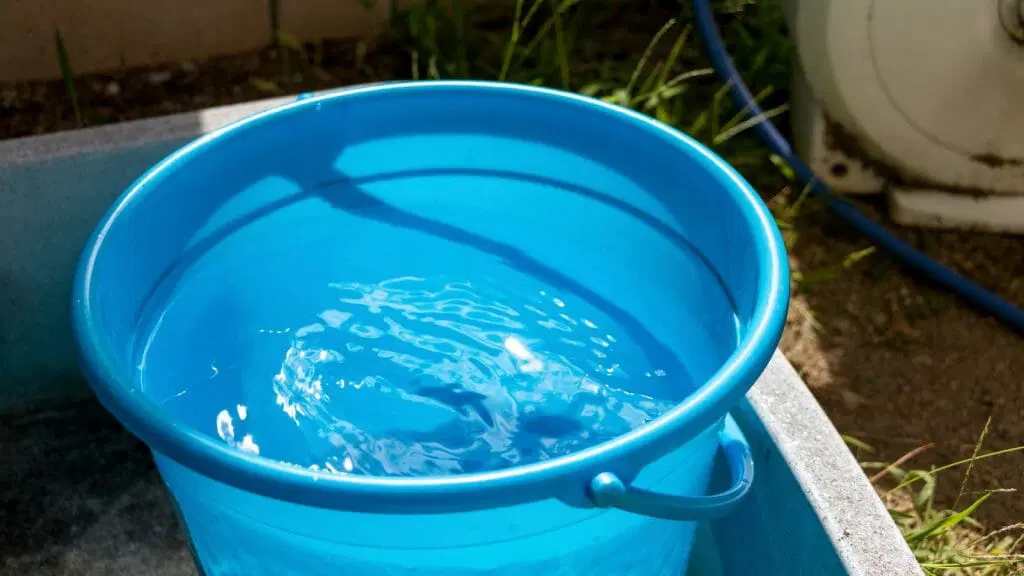 photo: diehardbackyard.com
photo: diehardbackyard.com
Fill a clean bucket with warm water and add the recommended amount of shock treatment. Stir the mixture until the shock is completely dissolved. This step is important to prevent any undissolved shock from damaging the pool surfaces.
3. Distribute the shock
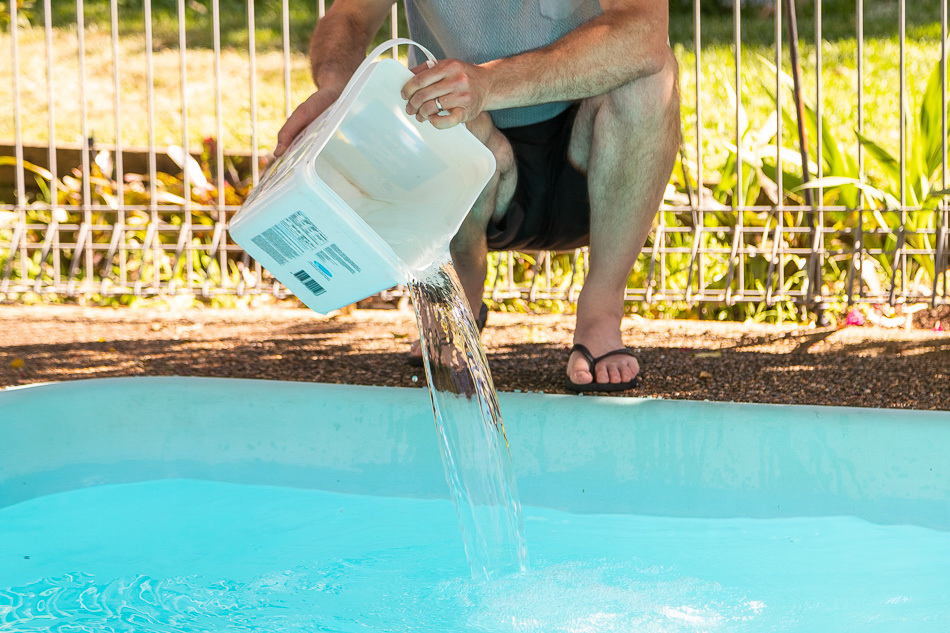 photo: myperfectpool.com.au
photo: myperfectpool.com.au
Carefully pour the dissolved shock mixture into the pool water. Start at one end and pour it evenly around the pool while walking along the edges.
- Run the filtration system:
After you shock, you should run your filter system for at least 8 hours overnight. Even better, you should run your filter 24 hours a day until your pool is completely clear. This will help to filter out the dead algae and other impurities from the green pool water. Backwash or clean the filter regularly to maintain its efficiency.
- Test and balance the water chemistry:
Now we’re back with the pool test kit. You should use it to check whether your pool is balanced. If it’s not, we recommend lowering the pH levels again or shocking the pool again.
How to maintain the cleanliness of the pool?
Consider preventive measures such as regular pool maintenance, appropriate sanitization, and proper water chemistry balance to prevent future algae growth and keep your pool away from the green and stay clean and clear.
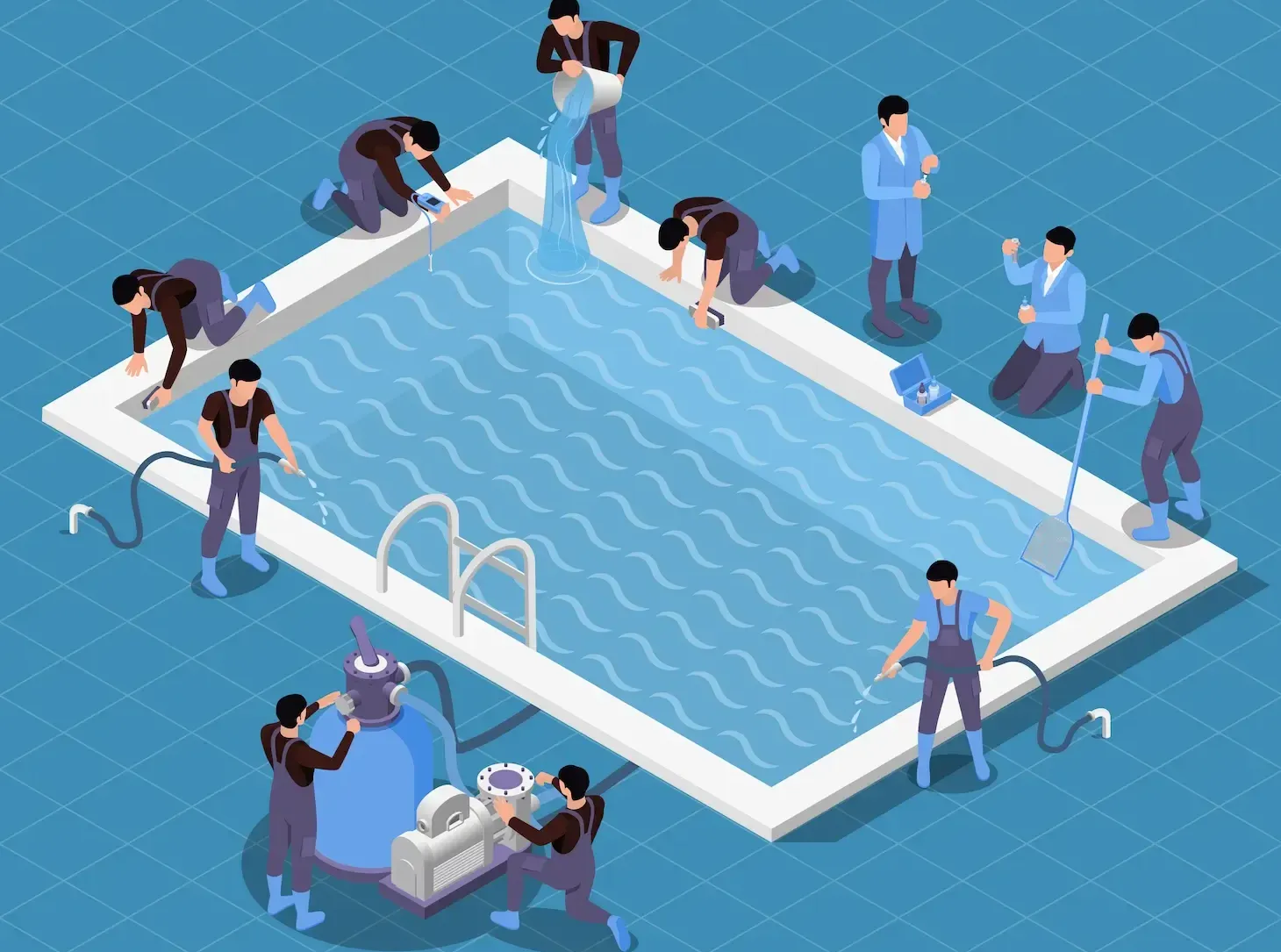
Here are some guides to maintain the cleanliness of the pool:
1. Regular Skimming and Cleaning:
Skim the pool's surface daily, or as necessary, using a skimmer net to remove leaves, debris, and insects. This regular maintenance will help keep the pool clean and free from unwanted materials.
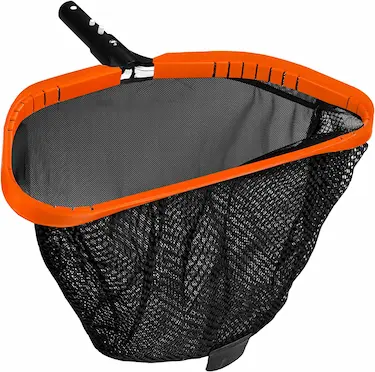
https://www.amazon.com/Cheerclean-Swimming-Cleaning-Reinforced-Double/dp/B09NR9VB2J
To ensure optimal filtration and prevent clogging, remember to empty the skimmer baskets and pool pump basket on a regular basis. By doing so, you'll maintain the efficiency of your pool's filtration system and prevent any potential issues.
2.Brushing:
Weekly, it is recommended to brush the walls, floor, and other surfaces of the pool to eliminate algae, dirt, and any buildup. This routine maintenance helps maintain a clean and pristine pool environment.
When brushing, ensure you use a pool brush specifically designed for your pool's surface material, such as concrete, vinyl, or fiberglass. Employ a circular or overlapping motion while brushing, as it is effective in removing any unwanted substances like green algae and keeping your pool surfaces in excellent condition.
3. Vacuuming:
Regularly vacuuming the pool is essential. This maintenance task helps keep the pool water clean and free from unwanted particles.
You have the option to use either a manual vacuum attached to a telescopic pole or an automatic pool cleaner, depending on your personal preference and the type of pool you have. Both options are effective in keeping your pool spotless, so choose the one that best suits your needs and pool requirements.
If you don’t know how to choose a pool cleaner, please refer to A Complete Guide. on How to use a Pool Cleaner.
4. Maintaining Proper Water Chemistry:
Regularly test the water using a reliable pool water testing kit. This will enable you to monitor the chemical levels accurately.
 photo: amazon
photo: amazon
https://www.amazon.com/JNW-Direct-Pool-Test-Strips/dp/B07PFCV894
According to the test results of the test strips to make necessary adjustments to maintain proper pH, total alkalinity, and chlorine or other sanitizers within the recommended ranges. This ensures the water remains balanced and safe for swimming.
5. Filtration System Maintenance:
The filtration system is vital for keeping the pool water clean, clear, and safe. It removes debris, maintains water balance, and prevents the growth of harmful elements to prevent the pool water from turning green. A well-functioning filtration system ensures a pleasant and healthy swimming experience.
Backwash or clean the pool filter as recommended to remove trapped debris and optimize filtration efficiency. Additionally check and clean the skimmer and pump baskets regularly.
6. Regular Inspection and Maintenance:
The pool is also a small ecosystem, if there is a certain part of a piece of equipment is damaged, the entire pool ecological balance will be disrupted. So, inspect the pool equipment, such as pumps, filters, and heaters, regularly to ensure they are functioning properly. Repair or replace any damaged or malfunctioning equipment promptly.
In conclusion
In order to provide a healthy and pleasant pool time for your family, please remember to check the status of the pool regularly. If you have any more questions about how to treat a green pool, or any other water care issue, you can seek help from some certified water care specialists.




